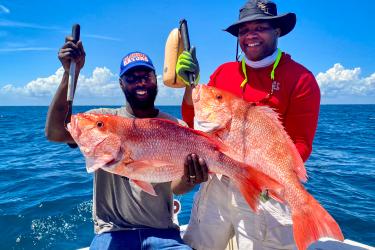NOAA Fisheries today has proposed to expand the designated critical habitat for endangered North Atlantic right whales in the northwestern Atlantic Ocean, including areas that will support calving and nursing.
The rule, issued pursuant to a court-approved settlement agreement, would expand the critical habitat to roughly 29,945 square nautical miles, and include northeast feeding areas in the Gulf of Maine/Georges Bank region and calving grounds from southern North Carolina to northern Florida.
Critical habitat identifies geographic areas containing physical and biological features essential to the conservation of a listed species. Critical habitat designations do not create preserves or refuges or any other regulations directly affecting the public. Also, the proposed rule does not include new restrictions or management measures for commercial fishing operations.
The Endangered Species Act provides for the designation of critical habitat for endangered and threatened species. NOAA Fisheries first designated critical habitat for right whales in 1994.
“The North Atlantic right whale is one of the most endangered whales to inhabit our coastal waters, and, while we are making progress in helping this species recover, it still faces numerous threats to its survival,” said Eileen Sobeck, assistant NOAA administrator for fisheries. “Survey data and other studies over the past 20 years have increased our understanding of right whale ecology and habitat needs. Based on this increased understanding, we are proposing to modify the existing critical habitat designation for the species.”
Designating critical habitat means that federal agencies conducting, funding or permitting activities that may affect these areas are required to consult with NOAA Fisheries to evaluate whether and how their actions would affect the habitat. The goal is to avoid or reduce impacts to the physical and biological features that define critical habitat for North Atlantic right whales.
The proposed northern critical habitat areas include important physical and biological features that provide foraging areas where the whales’ preferred prey, copepods (tiny planktonic crustaceans), are abundant. The proposed southern habitat area includes physical features that support calving and nursing with optimal physical oceanographic features including calm sea surface conditions, specific sea surface temperatures (45 degrees F to 63 degrees F), and water depths of 20 feet to 92 feet.
A critical habitat designation must be supported by a full analysis of economic, national security, and other impacts. In 2012, the President directed that any future designations of critical habitat carefully consider all public comments on relevant science and economic impact, including those that suggest methods for minimizing regulatory burdens. Members of the public may now submit comments on the agency’s proposal. Public input is sought on the science and economics of the proposed designation. NOAA Fisheries will thoroughly consider public comments and any new information submitted on the proposal or the impacts analysis before making a final decision on the rule.
The proposed regulations are expected to be filed on Tuesday, February 17, 2015. At that time, NOAA Fisheries will begin seeking comments on the proposed rule. Comments must be submitted no later than 60 days following publication.
The public may submit comments, identified by the NOAA-NMFS-2014-0085, by either of the following methods:
- Electronic Submissions: Submit all electronic public comments via the Federal eRulemaking Portal.
- Mail: Assistant Regional Administrator, Protected Resources Division, NMFS, Greater Atlantic Regional Office, 55 Great Republic Drive, Gloucester, MA 01930.
Background:
The western North Atlantic right whale population numbers almost 450 individual whales. Recent analysis of sightings data suggests a slight growth in population size. However, North Atlantic right whales remain endangered. Right whales were listed as endangered under the Endangered Species Conservation Act in June 1970, the precursor to the ESA. Right whales were subsequently listed as endangered under the ESA in 1973 and designated as "depleted" under the Marine Mammal Protection Act (MMPA). NOAA Fisheries updated the species’ listing in 2008 to reflect the latest scientific information, which indicated there were three, separate right whale species (North Atlantic right whale, North Pacific right whale, and southern right whale).
Under the ESA, an “endangered” species is “in danger of extinction throughout all or a significant portion of its range.” A “threatened” species is “likely to become an endangered species within the foreseeable future throughout all or a significant portion of its range.”
The biggest threats to North Atlantic right whales are ship strikes and entanglement in fishing gear. NOAA has taken a variety of regulatory and non-regulatory steps to reduce these threats to the species’ long-term survival, such as ship speed restrictions in certain areas and fishing gear modifications.


